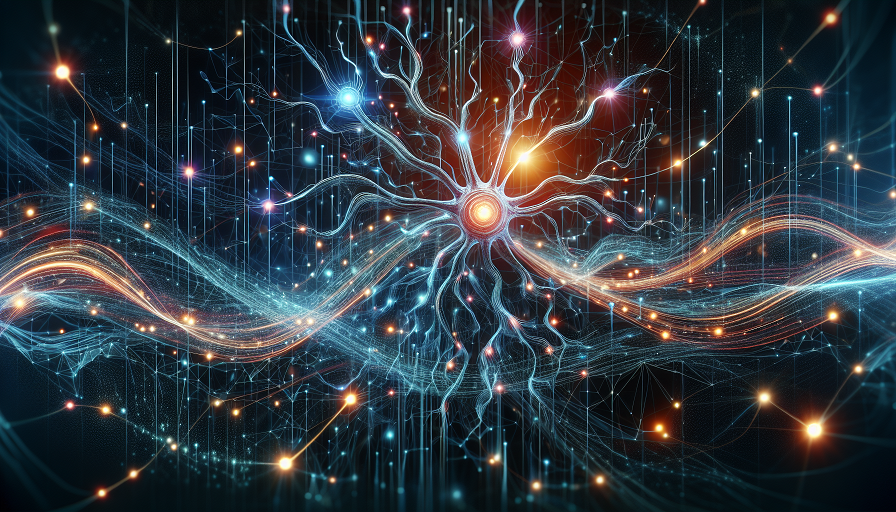
Have you ever listened to a piece of music and felt that it evoked vibrant colors in your mind? For some, these sensations are more than just metaphorical. They’re part of a condition known as synesthesia, where the stimulation of one sense automatically triggers another. This curious phenomenon might seem like magic, but it’s rooted in fascinating variations in the human brain. Here we look into the world of synesthetic artists who transform their colorful perceptions into breathtaking works of art.
Contents
What is Synesthesia?
Synesthesia is a unique perceptual condition where the activation of one sensory pathway leads to automatic, involuntary experiences in a second sensory or cognitive pathway. This means that someone with synesthesia might “see” sounds, “taste” words, or “feel” colors. Imagine listening to a symphony and actually seeing the notes as colors swirling around you—this is a common experience for synesthetes.
It’s important to note that synesthesia is not a disorder. In fact, many who have it find it to be an enriching part of their daily lives, offering a unique lens through which they perceive the world.
The Science Behind Synesthesia
How Does It Happen?
The precise cause of synesthesia remains a bit of a mystery, but scientists have some theories. The current understanding suggests that synesthesia may result from increased connectivity between sensory regions of the brain. In non-synesthetic individuals, these regions are more segregated, but in synesthetes, there seem to be more direct cross-talks.
During early development, our brains have more neural connections than we end up using. As we grow, some of these connections are pruned away. One hypothesis is that synesthetes retain some unusual connections, resulting in their cross-sensory experiences.
Genetic and Environmental Influences
There appears to be a genetic component to synesthesia, as it often runs in families. However, the inheritance pattern is not straightforward, pointing to the involvement of multiple genes. Environmental factors, particularly during formative years, may also play a role. For instance, early exposure to activities that engage multiple senses simultaneously could influence the development of synesthetic experiences.
The Types of Synesthesia
Synesthesia comes in various forms, each differing based on which senses are intertwined. Some common types include:
- Grapheme-Color Synesthesia: Individuals see specific colors when they think of letters or numbers.
- Chromesthesia: Sounds automatically and involuntarily evoke an experience of color, shape, and movement.
- Lexical-Gustatory Synesthesia: Certain words trigger tastes, sometimes flavors associated with specific memories.
- Ordinal Linguistic Personification: Ordered sequences such as numbers or days of the week are associated with personalities or genders.
Meet the Synesthetic Artists
Some of the most famous artists in history were believed to have synesthesia, using their extraordinary perceptions to create works that captivated audiences.
Kandinsky’s Orchestration of Color
Wassily Kandinsky, a pioneer of abstract art, is often cited as a synesthetic artist. His paintings were a vivid portrayal of his inner experience, where he reportedly combined colors with musical notes. This allowed him to “hear” the colors he painted, creating a symphony on canvas. His bold use of color and form was a direct expression of his synesthetic experience and has inspired generations of artists.
Exploring Today’s Synesthetic Artists
Tori Amos, a celebrated musician, describes seeing music as a wash of colors and shapes. She often uses these visual experiences to guide her songwriting, bringing a unique depth to her musical pieces. Similarly, Pharrell Williams and Billie Eilish have shared their experiences with seeing music as visual landscapes.
These artists aren’t just creating music or art; they’re translating the vibrant, intertwining experiences that occur naturally in their minds into tangible forms that we all can appreciate.
The Potential Role of Brain Supplements
As interest in the mind’s extraordinary capabilities grows, so does curiosity about ways to enhance cognitive function and sensory perception. Brain supplements, often known as nootropics, have gained popularity as potential enhancers of cognitive processes, including memory, focus, and even creativity. While these supplements are typically used to improve mental clarity and focus, some enthusiasts question whether they could influence unique perceptual experiences like synesthesia.
Currently, there is no scientific evidence directly linking brain supplements to the induction or enhancement of synesthetic experiences. However, supplements that support overall brain health might indirectly contribute to more vivid sensory experiences. For instance, Omega-3 fatty acids, found in fish oil, are known for their neuroprotective properties and may enhance neural transmission, which could support enhanced sensory integration.
Other supplements, such as those containing substances like Ginkgo Biloba or Bacopa Monnieri, are researched for their potential neurocognitive benefits. While they haven’t demonstrated direct effects on synesthesia, they might still play a role in optimizing the brain’s sensory processing capabilities by supporting memory, mood, and general cognitive health.
Living with Synesthesia: A Gift or a Challenge?
While synesthesia is often depicted as a mystical gift—providing vivid and enhanced sensory experiences—it’s not always purely positive. Some synesthetes report difficulties when their sensory experiences clash with societal expectations, or when overwhelming sensory input becomes difficult to manage.
However, many embrace synesthesia as part of their identity, finding that it enriches their lives by providing creative and emotional inspiration. Artists in particular often find unique ways to express their synesthetic experiences, leading to innovation and new perspectives in their work.
The Ongoing Research
The study of synesthesia is a vibrant field, with researchers striving to uncover the neural underpinnings and breadth of synesthetic experiences. Understanding synesthesia not only helps us appreciate the diversity of human perception but also offers insights into how our brains process sensory information.
Advances in imaging technologies, like functional MRI, are beginning to reveal the complex dance of connections that might underpin synesthetic experiences. These findings could further inform us about the brain’s plasticity and its capacity for reorganization.
Moreover, exploring genetic links and developmental aspects may one day help us learn how environmental factors interact with genetic predispositions to produce such extraordinary cross-sensory experiences.
Whether you’re a musician, a painter, or simply someone fascinated by the workings of the human mind, synesthesia offers a window into a world where senses intertwine in dazzling ways. The next time you listen to music, perhaps you’ll close your eyes and imagine what colors these sounds might paint on the canvas of a synesthete’s mind.

